Milwaukee M12 2528-21G2 Handleiding
Milwaukee
Niet gecategoriseerd
M12 2528-21G2
Bekijk gratis de handleiding van Milwaukee M12 2528-21G2 (20 pagina’s), behorend tot de categorie Niet gecategoriseerd. Deze gids werd als nuttig beoordeeld door 17 mensen en kreeg gemiddeld 4.3 sterren uit 9 reviews. Heb je een vraag over Milwaukee M12 2528-21G2 of wil je andere gebruikers van dit product iets vragen? Stel een vraag
Pagina 1/20

Cat. No. / No de cat.
2528-20, 49-16-2761, 49-16-2762
M12™ 1-GALLON & 2-GALLON HANDHELD SPRAYER
PULVÉRISATEUR MANUEL M12™ 3,8 L (1 GAL) ET 7,6 L (2 GAL)
ATOMIZADOR MANUAL M12™ 3,8 L (1 GAL) Y 7,6 L (2 GAL)
OPERATOR'S MANUAL
MANUEL de L'UTILISATEUR
MANUAL del OPERADOR
WARNING To reduce the risk of injury, user must read and understand operator's manual.
AVERTISSEMENT An de réduire le risque de blessures, l'utilisateur doit lire et bien
comprendre le manuel.
ADVERTENCIA Para reducir el riesgo de lesiones, el usuario debe leer y entender el manual.

2
IMPORTANT
SAFETY
INSTRUCTIONS
WARNING
Read all safety warnings, instruc-
tions, illustrations and specica-
tions provided with this power tool. Failure to
follow all instructions listed below may result in
electric shock, re and/or serious injury. Save all
warnings and instructions for future reference.
The term "power tool" in the warnings refers to your
mains-operated (corded) power tool or battery-oper-
ated (cordless) power tool.
WORK AREA SAFETY
• Keep work area clean and well lit. Cluttered or
dark areas invite accidents.
• Do not operate power tools in explosive atmo-
spheres, such as in the presence of ammable
liquids, gases or dust. Power tools create sparks
which may ignite the dust or fumes.
• Keep children and bystanders away while operat-
ing a power tool. Distractions can cause you to lose
control.
ELECTRICAL SAFETY
• Avoid body contact with earthed or grounded
surfaces, such as pipes, radiators, ranges and
refrigerators. There is an increased risk of electric
shock if your body is earthed or grounded.
• Do not expose power tools to rain or wet condi-
tions. Water entering a power tool will increase the
risk of electric shock.
• Outdoor use. Do not expose to rain; store in-
doors.
PERSONAL SAFETY
• Stay alert, watch what you are doing and use
common sense when operating a power tool. Do
not use a power tool while you are tired or under
the inuence of drugs, alcohol or medication. A
moment of inattention while operating power tools
may result in serious personal injury.
• Use personal protective equipment. Always
wear eye protection. Protective equipment such
as a dust mask, non-skid safety shoes, hard hat or
hearing protection used for appropriate conditions
will reduce personal injuries.
• Prevent unintentional starting. Ensure the switch
is in the o-position before connecting to power
source and/or battery pack, picking up or carrying
the tool. Carrying power tools with your nger on
the switch or energizing power tools that have the
switch on invites accidents.
• Do not overreach. Keep proper footing and
balance at all times. This enables better control
of the power tool in unexpected situations.
• Dress properly. Do not wear loose clothing or
jewelry. Keep your hair and clothing away from
moving parts. Loose clothes, jewelry or long hair
can be caught in moving parts.
• Do not let familiarity gained from frequent use
of tools allow you to become complacent and
ignore tool safety principles. A careless action can
cause severe injury within a fraction of a second.
POWER TOOL USE AND CARE
• Do not force the power tool. Use the correct power
tool for your application. The correct power tool
will do the job better and safer at the rate for which
it was designed.
• Do not use the power tool if the switch does not
turn it on and o. Any power tool that cannot be
controlled with the switch is dangerous and must be
repaired.
• Disconnect the plug from the power source and/
or remove the battery pack, if detachable, from
the power tool before making any adjustments,
changing accessories, or storing power tools.
Such preventive safety measures reduce the risk of
starting the power tool accidentally.
• Store idle power tools out of the reach of children
and do not allow persons unfamiliar with the
power tool or these instructions to operate the
power tool. Power tools are dangerous in the hands
of untrained users.
• Maintain power tools and accessories. Check
for misalignment or binding of moving parts,
breakage of parts and any other condition that
may aect the power tool's operation.
• Use the power tool, accessories and tool bits
etc. in accordance with these instructions,
taking into account the working conditions and
the work to be performed. Use of the power tool
for operations dierent from those intended could
result in a hazardous situation.
• Keep handles and grasping surfaces dry, clean
and free from oil and grease. Slippery handles and
grasping surfaces do not allow for safe handling and
control of the tool in unexpected situations.
BATTERY TOOL USE AND CARE
• Recharge only with the charger specied by the
manufacturer. A charger that is suitable for one type
of battery pack may create a risk of re when used
with another battery pack.
• Use power tools only with specically designated
battery packs. Use of any other battery packs may
create a risk of injury and re.
• When battery pack is not in use, keep it away
from other metal objects, like paper clips, coins,
keys, nails, screws or other small metal objects,
that can make a connection from one terminal
to another. Shorting the battery terminals together
may cause burns or a re.
• Under abusive conditions, liquid may be ejected
from the battery; avoid contact. If contact ac-
cidentally occurs, flush with water. If liquid
contacts eyes, additionally seek medical help.
Liquid ejected from the battery may cause irritation
or burns.
• Do not use a battery pack or tool that is dam-
aged or modied. Damaged or modied batteries
may exhibit unpredictable behavior resulting in re,
explosion or risk of injury.
• Do not expose a battery pack or tool to re or
excessive temperature. Exposure to re or tem-
perature above 265°F (130°C) may cause explosion.
• Follow all charging instructions and do not charge
the battery pack or tool outside the temperature
range specied in the instructions. Charging
improperly or at temperatures outside the specied
range may damage the battery and increase the risk
of re.

3
SERVICE
• Have your power tool serviced by a qualied
repair person using only identical replacement
parts. This will ensure that the safety of the power
tool is maintained.
• Never service damaged battery packs. Service
of battery packs should only be performed by the
manufacturer or authorized service providers.
SPECIFIC SAFETY RULES FOR
HANDHELD SPRAYERS
•
WARNING
Risk of re or explosion. Do not
use flammable liquids such as
gasoline, solvents, or gas-producing chemicals.
Do not use tool around spark, ame, or smoke.
Chemical may ignite.
•These products are suitable for pesticide ap-
plications (such as insecticides, fungicides,
or herbicides), fertilizers, and water supply
applications, when used in accordance with
these instructions and those supplied with the
chemicals.
• Do not use bleach, caustic (alkali) self-heating
or corrosive (acid) liquids in this sprayer. Do not
pour hot or boiling liquids into the tank. These
can corrode metal parts, weaken the tank and
hose causing a leak.
• Always ll the tank with water rst, before adding
chemicals.
• To reduce the risk of re, personal injury, and
product damage due to a short circuit, never
immerse your tool, battery pack or charger in
uid or allow a uid to ow inside them. Do not
place or store tool where it can fall or be pulled
into a tub or sink. Corrosive or conductive uids,
such as seawater, certain industrial chemicals,
and bleach or bleach containing products, etc.,
can cause a short circuit.
• Electric shock hazard. Never spray toward
electrical outlets.
• Spray area must be well ventilated to avoid
hazardous fumes build-up.
• Avoid spraying on windy days. Spray can be
blown onto people, plants, or objects that should
not be sprayed.
• Do not store chemicals in the tank. Chemicals
can degrade seals and hoses. Drain and clean
after each use.
•Remove gloves before handling battery packs.
Chemicals are harmful to plastics.
• Maintain your power tool. Thoroughly inspect
inside and outside and examine all compo-
nents before each use. Check for cracked and
deteriorated hoses, leaks, clogged nozzles, and
missing or damaged parts. If damaged, have the
power tool repaired before use. Many accidents
are caused by poorly maintained power tools.
• Always unplug the charger and remove the battery
pack from the charger or tool before performing
any maintenance, storing, or draining the tool.
Never disassemble the tool, battery pack or
charger. Contact a MILWAUKEE service facility
for ALL repairs.
• Do not eat or smoke while handling or operating
the tool. After use, wash with hot, soapy water
to help reduce the risk of health hazards due to
exposure to chemicals.
• Always use common sense and be cautious when
using tools. It is not possible to anticipate every
situation that could result in a dangerous outcome.
Do not use this tool if you do not understand these
operating instructions or you feel the work is beyond
your capability; contact Milwaukee Tool or a trained
professional for additional information or training.
• Maintain labels and nameplates. These carry
important information. If unreadable or missing,
contact a MILWAUKEE service facility for a free
replacement.
•
WARNING
Some dust created by power sanding,
sawing, grinding, drilling, and other
construction activities contains chemicals known to
cause cancer, birth defects or other reproductive
harm. Some examples of these chemicals are:
• lead from lead-based paint
• crystalline silica from bricks and cement and other
masonry products, and
• arsenic and chromium from chemically-treated
lumber.
Your risk from these exposures varies, depending on
how often you do this type of work. To reduce your
exposure to these chemicals: work in a well-ventilated
area, and work with approved safety equipment, such
as those dust masks that are specially designed to
lter out microscopic particles.
READ AND
SAVE ALL
INSTRUCTIONS
FOR FUTURE USE
FOR HOUSEHOLD USE.
SYMBOLOGY
Volts
Direct Current
Read operator's manual
PPE
Wear personal protective equipment
(PPE) according to the chemical
manufacturer's instructions.
Wear eye protection
Wear gloves
Do not use ammable liquids
C US
UL Listing for Canada and U.S.
Product specificaties
| Merk: | Milwaukee |
| Categorie: | Niet gecategoriseerd |
| Model: | M12 2528-21G2 |
Heb je hulp nodig?
Als je hulp nodig hebt met Milwaukee M12 2528-21G2 stel dan hieronder een vraag en andere gebruikers zullen je antwoorden
Handleiding Niet gecategoriseerd Milwaukee

15 September 2025
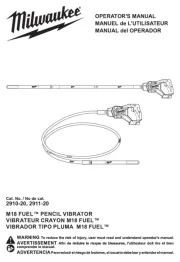
1 September 2025
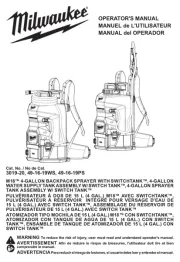
1 September 2025
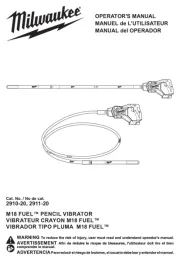
1 September 2025
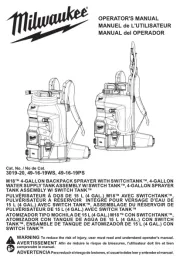
1 September 2025
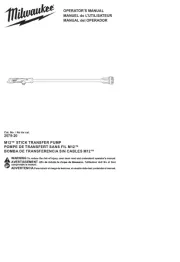
19 Augustus 2025
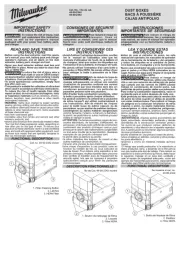
19 Augustus 2025
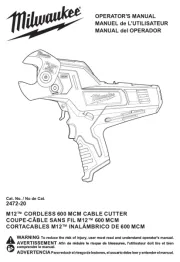
19 Augustus 2025

18 Augustus 2025

18 Augustus 2025
Handleiding Niet gecategoriseerd
- Trekstor
- StrikeMaster
- Timbersled
- Nikkei
- Equip
- Kata
- Kohler
- Rollei
- Ovente
- Ade
- SEH
- Ei Electronics
- Lava
- UPG
- PDMovie
Nieuwste handleidingen voor Niet gecategoriseerd
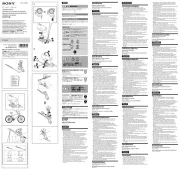
16 September 2025
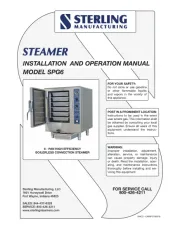
16 September 2025
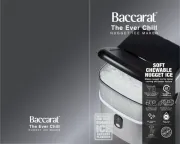
16 September 2025
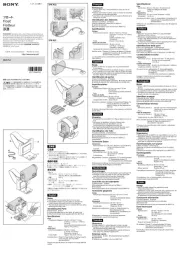
16 September 2025
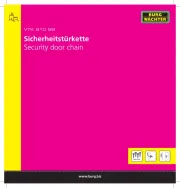
16 September 2025
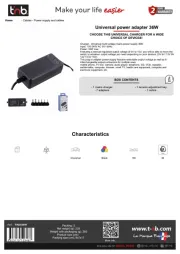
16 September 2025
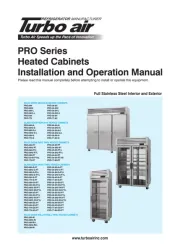
16 September 2025
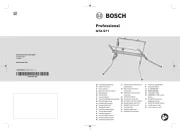
16 September 2025
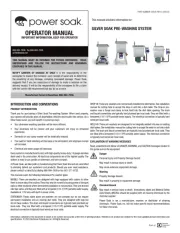
16 September 2025
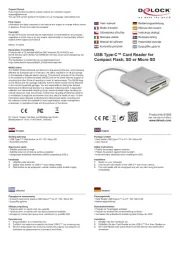
16 September 2025